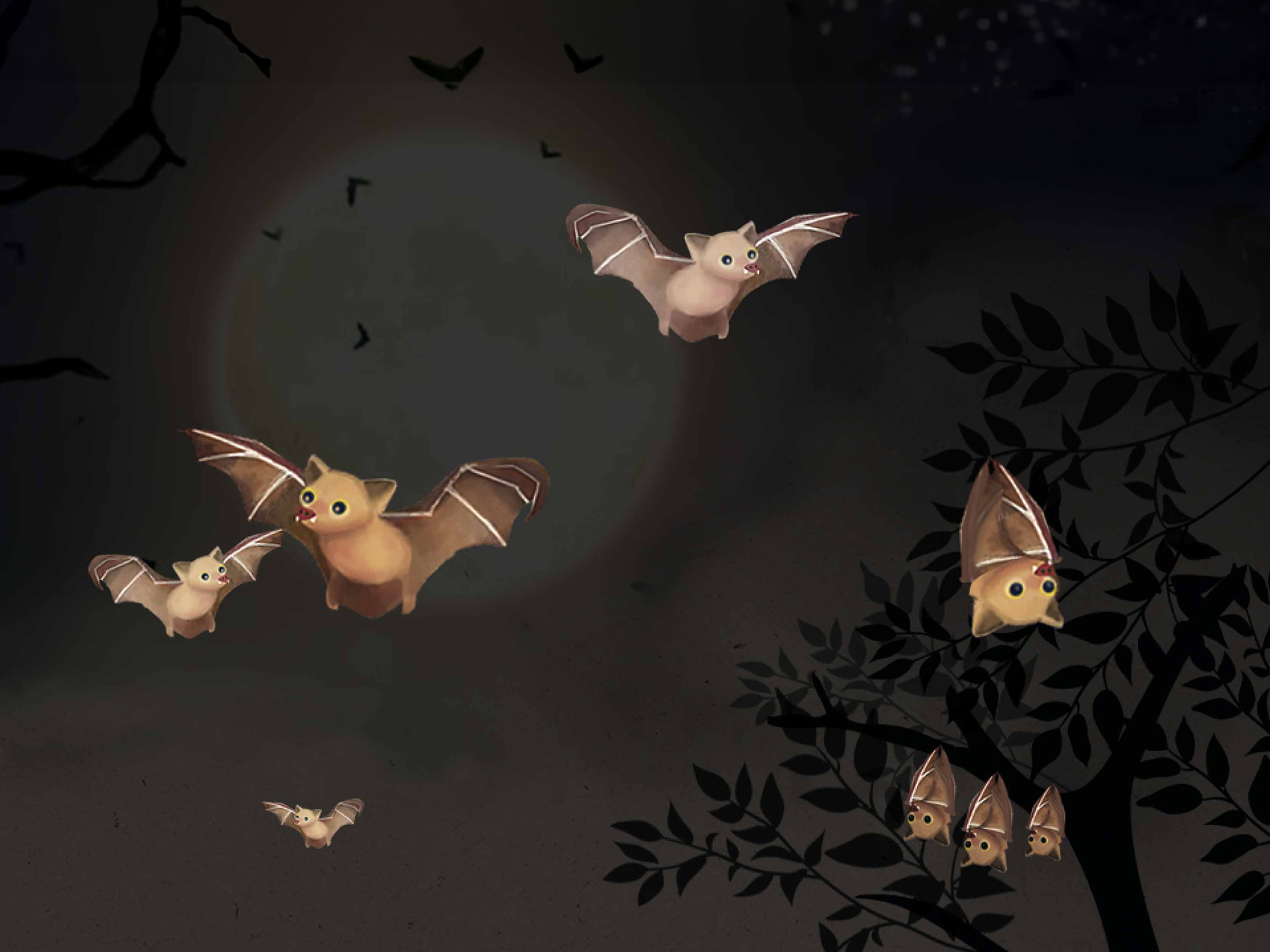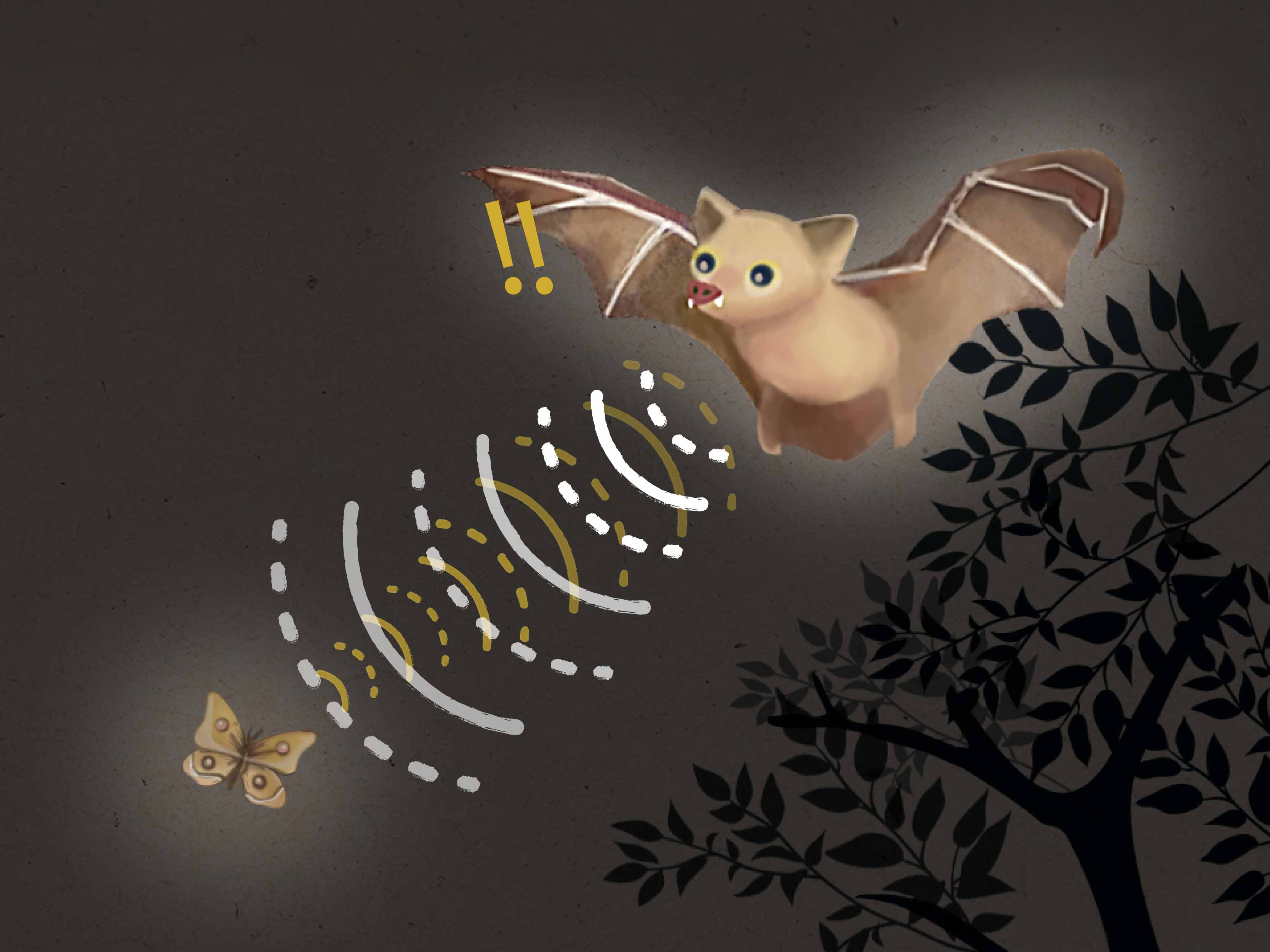Do you know what kinds of animals cower in the dark and disappear at the first sign of light? Bats are an iconic exemplar. These flying mammals are only seen after dark; actually, most of the flying animals we see at nighttime in Hong Kong are bats! The Japanese Pipistrelle (Pipistrellus abramus) and Chinese Noctule (Nyctalus plancyi) are two commonly seen local species. Being creatures of the night, bats have to learn to live flexibly. As such, they live in both rural and urban areas, making water tunnels, abandoned mines, and even air-conditioners their homes.
Bats are incredibly agile and have an excellent ability to navigate, even in pitch-black darkness. But this is not due to any special night vision. In fact, some bat species are known to have very poor eyesight, so their navigational skills rely on echolocation to locate objects, no matter an obstacle or a moving prey.
For those of you who are interested in echolocation, here's how it works: bats emit a high frequency signal (mostly ultrasonic) and then analyse the rebound signals to detect, characterise and locate obstacles or prey. Just imagine talking in a cave or spacious empty rooms, and hearing our own voice echoes; echolocation is similar to that. Generally, there are three phases involved in echolocation, i.e. searching, approaching and terminating. Firstly, a "Where am I? Where am I? " signal will be generated. Once the bat has located a target prey, the signal frequency will increase significantly to pinpoint the location as it approaches the prey. Once the bat has successfully caught its prey, the signal frequency will decrease until it detects another target.
Contrary to popular beliefs and some folktales, bats in Hong Kong are not blodd-sucking savages, nor are they pests or omens of misfortune as seen in some cultures. In reality, bats have important roles in natural ecosystems. Insectivorous bats act as insect pest controllers and keep the populations of night-flying insects in balance, while fruit bats act as pollinators and seed dispersers for plants. Did you know that more than 300 plant species in the Afro-Eurasia tropics rely on bats for survival? Some of these plants bloom at night, so they use special odours or flower shapes to attract bats. Bats have also contributed to our technological and medical advances. For example, echolocation has inspired sonar technology, and an anti-blood-clotting agent extracted from the saliva of the Vampire Bats helps to treat strokes and prevent brain damage.
So much like our beloved fictional hero, bats are our little unspoken 'heroes' of the night. If you would like to know more about our little flying mammals, you can find information on AFCD's website.

